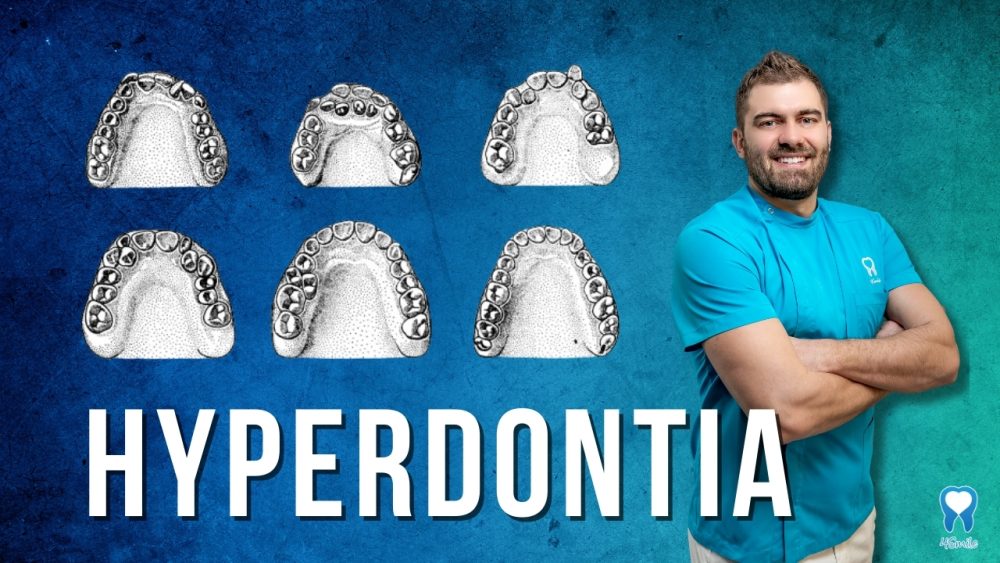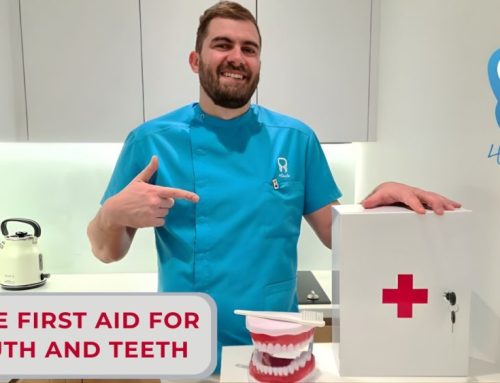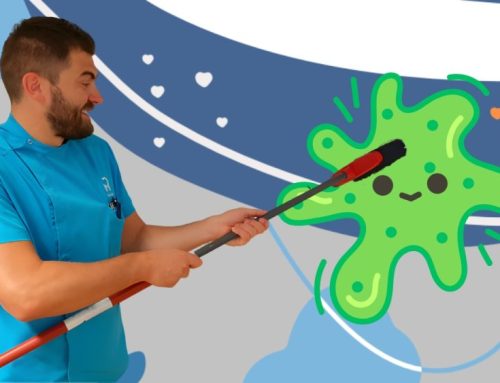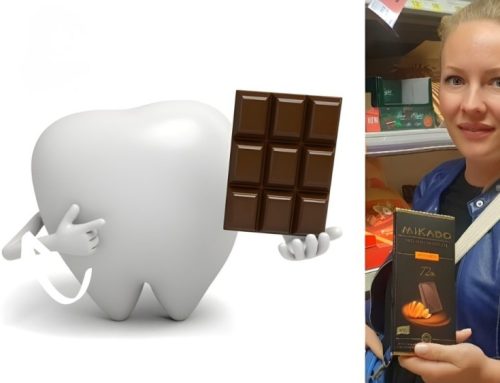The human body is a marvel of complexity, and this applies to our oral health as well. While most people are familiar with common dental issues like cavities, gum disease, or misaligned teeth, there are rarer conditions that may intrigue even specialists. One such condition is hyperdontia, a term used to describe the presence of extra teeth in the oral cavity.
In this week’s blog from Dental Center 4Smile, we’ll explore hyperdontia, its causes, symptoms, diagnosis, and treatment options.
What is hyperdontia?
Hyperdontia, also known as the condition of supernumerary teeth, is a dental anomaly in which an individual develops more teeth than the standard set of 32 permanent teeth. These extra teeth can appear anywhere in the mouth, including the front, back, upper, and lower jaws. They may resemble regular teeth or take on irregular shapes and sizes, making them a subject of dental curiosity.
Causes of hyperdontia
The exact cause of hyperdontia is not always clear, but several factors may contribute to its development. Some possible causes and risk factors include:
- Genetics: A family history of hyperdontia may increase the likelihood of developing this condition. Certain genetic mutations are linked to the formation of extra teeth.
- External factors: Prenatal exposure to factors like radiation, trauma, or certain medications can play a role in the development of supernumerary teeth.
- Syndromes and disorders: Hyperdontia is more common in people with certain syndromes and genetic disorders, such as cleidocranial dysplasia and Gardner’s syndrome.
Signs and symptoms of hyperdontia
Hyperdontia can manifest in different ways, and its signs and symptoms can vary from person to person. Common indications of hyperdontia include:
- Crowding: Extra teeth can lead to overcrowding in the mouth, making it difficult for regular teeth to erupt properly.
- Discomfort and pain: Crowding and misalignment caused by extra teeth can lead to discomfort and even pain, especially when chewing or speaking.
- Aesthetic issues: The presence of additional, misshapen teeth can impact a person’s smile and self-confidence.
Diagnosis of Hyperdontia
Diagnosing hyperdontia usually involves a thorough dental examination, which may include X-rays to visualize the position and orientation of the extra teeth. Consulting a dentist is essential to confirm the presence of supernumerary teeth and assess their impact on oral health.
Treatment options for hyperdontia
Treatment for hyperdontia varies depending on the number, position, and effect of the extra teeth. Common treatment options include:
- Tooth extraction: The simplest approach is to remove the extra teeth, especially if they cause crowding or discomfort.
- Orthodontic intervention: Orthodontic treatment may be needed to correct misalignment or spacing issues caused by hyperdontia.
- Cosmetic dentistry: For aesthetic issues affecting the smile, procedures like dental veneers or dental crowns can help improve the appearance of the teeth.
Hyperdontia is a rare dental condition that can pose challenges for oral health and aesthetics. While it can be intriguing from a scientific perspective, its impact on individuals’ lives can be significant. Prompt diagnosis and appropriate treatment by dentist Ivan Antolković are key to managing hyperdontia and ensuring the well-being and confidence of those affected by this unique condition. If you suspect you have hyperdontia or are concerned about your oral health, consult a qualified dentist to explore the best treatment options for your specific case.















